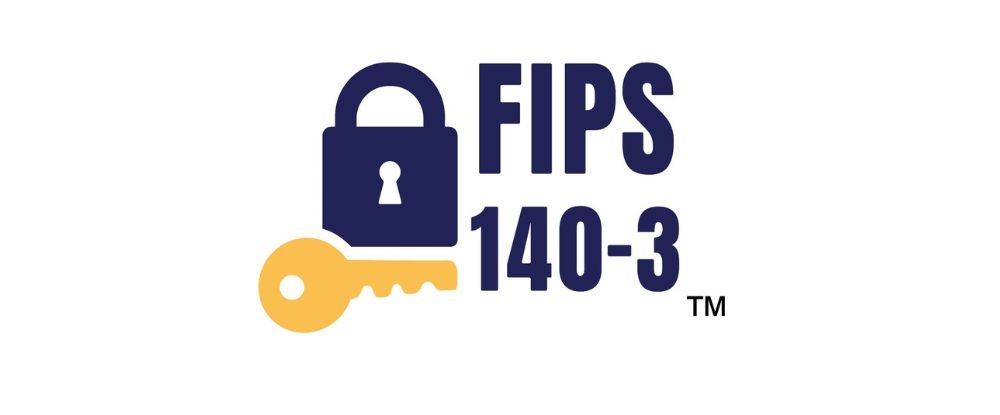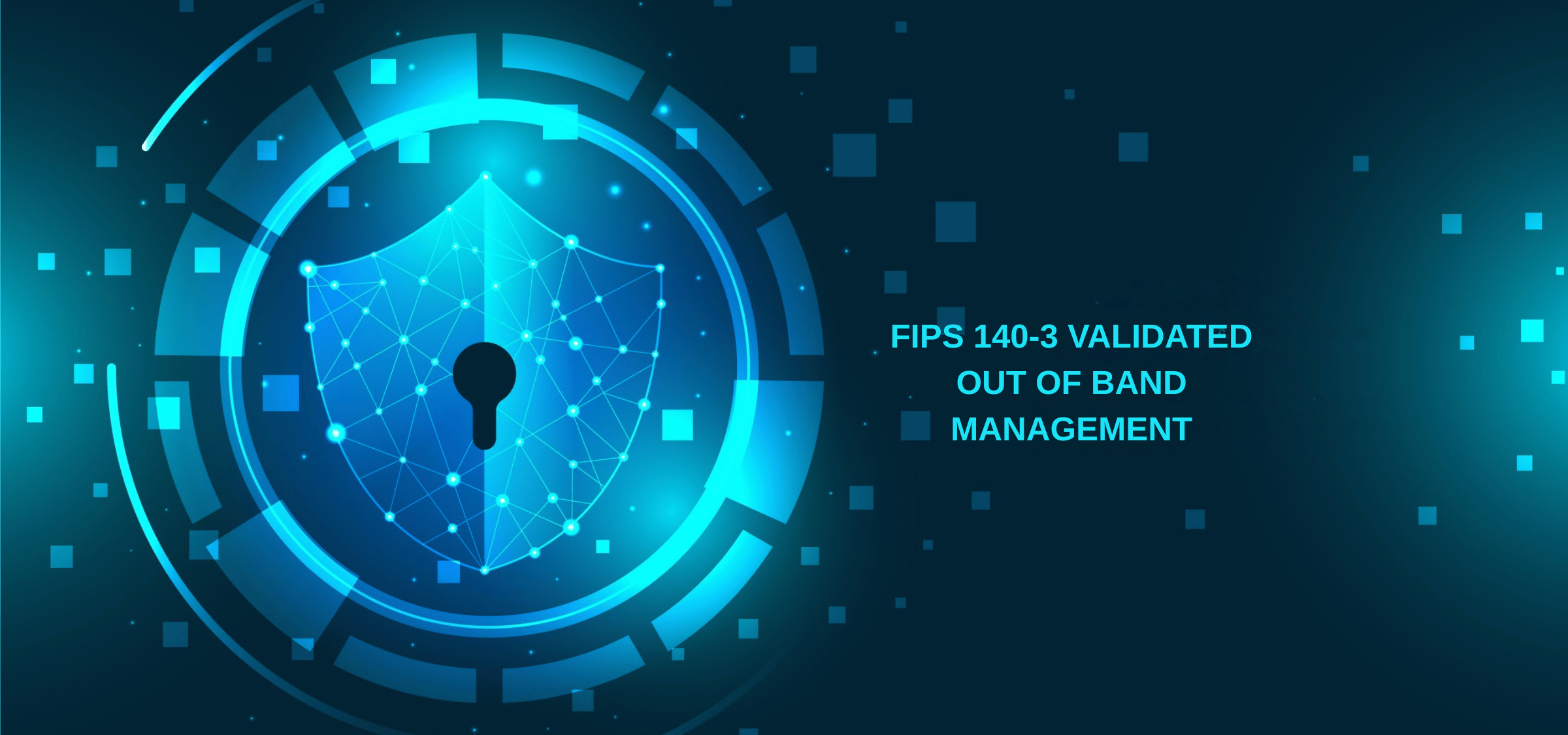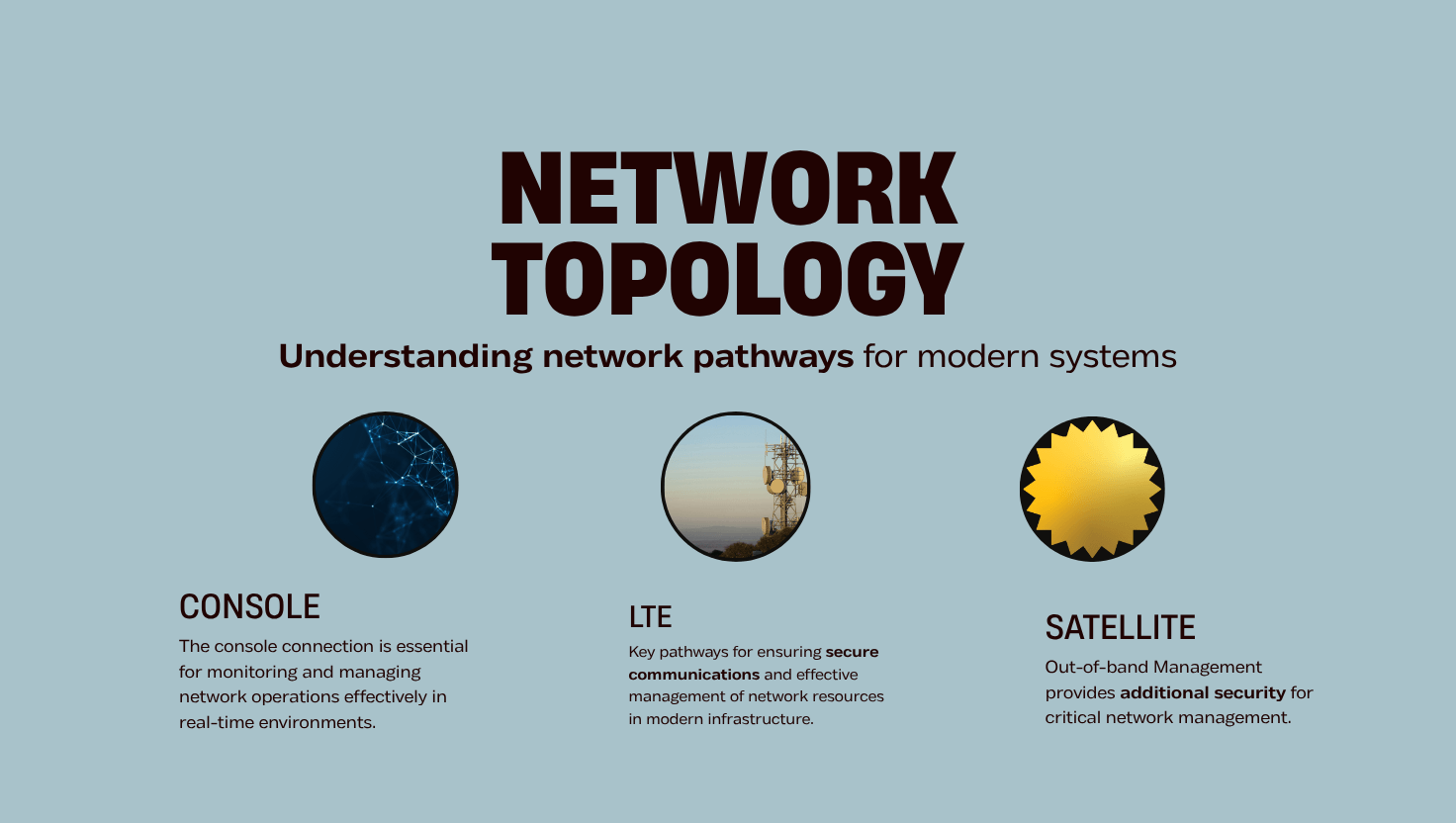FISMA High Compliance: Trust CDI's Validated OOB Management
articles
Adam Cady

FISMA High Compliance: Trust CDI's Validated OOB Management
Data security requirements continue to grow across federal agencies, regulated industries, and critical infrastructure. Organizations managing sensitive information need trusted solutions that surpass baseline protection across risk levels (High, Moderate, Low). The federal government and civilian contractors must adhere to strict standards like FIPS 140-3 and FISMA.
Out-of-band management (OOBM) serves as the critical gatekeeper between IT professionals and network devices during emergencies. OOB solutions must facilitate remote recovery while functioning as a fortress against evolving threats. The demand for solutions manufactured entirely in the United States has increased due to heightened scrutiny of supply chain integrity.
FISMA Requirements
Every federal agency has security compliance requirements that must be met on an annual or ongoing basis.
The Federal Information Systems Management Act (FISMA) defines these requirements for civilian agencies. FISMA is U.S. legislation establishing a comprehensive framework to protect government information, operations, and assets against threats. FISMA was signed into law in 2002 and further updated in 2014, it requires federal systems to meet specific security controls.
Key FISMA Requirements:
Maintain an IT systems inventory including interdependencies between internal systems and those outside agency control
Categorize data and systems by risk level (low, moderate, or high)
Maintain a system security plan (SSP) that defines implementation of security controls
Utilize appropriate security controls as defined in NIST Special Publication 800-53
Conduct risk assessments to validate security controls and determine if additional protections are needed
Complete certification and accreditation of security controls
Implement continuous monitoring to detect abnormalities and perform ongoing assessment
Maintaining Compliance
FISMA compliance involves hundreds of additional security controls covering everything from encryption standards to program-wide decisions affecting funding, personnel security, and disaster recovery.
Automation is the most efficient way to maintain compliance. For maintaining compliance consider tools that can:
Discover network devices and inventory systems
Validate security configurations
Verify security patches have been applied
Monitor system logs to identify threats
Block malicious activity
Monitor system performance to prevent downtime
Product Manufacturer | FIPS 140-3 Validated | Lab Certificate Number | Made in USA? |
Communication Devices, Inc. (CDI) | Yes | #4795 | Yes - All |
Lantronix | No | N/A | Some |
OpenGear | No | N/A | Yes |
Perle | No | N/A | No |
ZPE | No | N/A | No Data to Confirm |
LTE Out of Band Management for Secure Remote Access
Cellular Wireless (LTE/5G) Out of Band Management has become the standard replacement for analog POTS lines as TDM Networks are being sunset. Most OOB environments are moving towards LTE to continue their network transport.
Security Concern: Some OOB manufacturers offer solutions with public/Internet-facing IP addressed SIM cards, creating security risks from DDoS attacks, malware, and unauthorized access.
CDI's Advantage:
CDI uniquely provides appliances with FIPS 140-3 validated security and private SIM cards operating on a secure private LTE APN. Devices come standard with both AT&T and Verizon SIM and LTE services in a tamper-resistant chassis.
Benefits include:
Turnkey global installations
Simplified troubleshooting through a single support ticket Enhanced security through private network access
Comprehensive Support for Government Networks
CDI has pioneered Secure Out of Band Management for over 50 years.
Key differentiators:
US-made products
US-based Customer Support staff
1-year standard support with additional options available
Private-Custom APN option for enhanced network security
Expert design engineers with federal security experience
CAC Authentication integration
Keystroke logging for failsafe operation
Why FIPS 140-3 Validation Sets a New Security Baseline
FIPS 140-3 is a rigorous, independently validated cryptographic standard developed by NIST. The Level 3 standard enforces robust, hardware-backed security controls designed to protect systems even against physical attacks.
Many OOBM devices claim compliance but use third-party open-source FIPS modules that don't guarantee complete system security. Such configurations may fail during a FISMA review.
Three Myths About FIPS Validation in OOBM
"We have a FIPS-validated crypto library, so we're compliant." FIPS validation must encompass the entire module, including hardware integration, tamper protection, and secure key storage.
"Open-source crypto is enough for audits." Federal reviewers distinguish between product embedded, independently validated cryptography and plug-in software modules.
"All competitors offer the same compliance level." The FIPS 140-3 process requires thorough testing by an accredited lab and NIST review—few solutions meet this standard.
Made in the USA: Why it Matters
With supply chain concerns, cyber threats, and executive orders focusing on integrity, "Made in the USA" provides:
Full control over sourcing, assembly, and validation
Protection against foreign tampering or backdoors
Rapid, tailored support
Assurance that updates won't be delayed by international complications
FISMA High and FISMA Moderate: Understanding the Stakes
FISMA divides systems by risk:
Security Category | Description | Typical Use Cases |
| Low | Loss of confidentiality, integrity, or availability results in limited adverse effects. | Public-facing websites or non-sensitive systems. |
| Moderate | Loss could have serious adverse effects on operations or assets. | Many business, financial, and citizen support systems. |
| High | Loss could have catastrophic impact; significant harm to national interests, assets, or individuals. | Law enforcement, defense, critical infrastructure. |
Most OOBM systems fall into "Moderate" or "High" categories, requiring resilience against both cyber and physical intrusion.
LTE Out-of-Band Management: Modern OOB Meets Next-Gen Connectivity
LTE-based out-of-band management provides administrators with access even during network-wide outages, cyberattacks, or when production networks are compromised. This is critical for distributed environments in national infrastructure, defence, and utilities.
True security requires protection at every layer: device, communications, user access, and cryptography. Combining LTE OOB with FIPS 140-3 validation across both software and hardware neutralizes the risk of unauthorized access.
What to Look For: A FIPS 140-3 Checklist
When evaluating OOB solutions, demand concrete evidence:
Laboratory Validation: Complete system tested by an accredited lab
Certificate Proof: FIPS 140-3 certificate publicly listed by NIST
Level 3 Security: Hardware protection, secure boot, tamper detection, encrypted storage
Domestic Production: Design, manufacturing, and software built in the United States
FISMA Suitability: Proven success in FISMA audits
LTE Security: Separated from production networks and cryptographically secured
Customer Experiences: Feedback from agencies that have deployed the solution
CDI's leadership in earning the first and only FIPS 140-3 Level 3 validation for OOB management (Certificate #4795) represents a shift in what federal buyers should expect.
A new standard for security FIPS 140-3 Level 3 validation is no longer just a differentiator—it's a base requirement for critical infrastructure. Organizations that choose fully validated, domestically produced OOB management systems can:
Reduce regulatory friction
Address audit cycles with confidence and speed
Protect essential information without compromises
With independent, hardware-backed cryptographic validation, domestic manufacturing, and support for both legacy and LTE connectivity, CDI offers a comprehensive solution for the most demanding security environments.
Related Tags
Out-of-band management (OOBM)Network managementRemote accessLTE connectivityIT infrastructureFISMA complianceFIPS 140-3 validationFederal security standardsCybersecurityRisk managementGovernment complianceHardware security modulesCellular managementShare this article
Related Content
United States Office
- 85 Fulton Street Boonton, NJ 07005
- +1 973-334-1980
- +1 973-334-0545
- info@commdevices.com
© 2023 Communication Devices, Inc.







